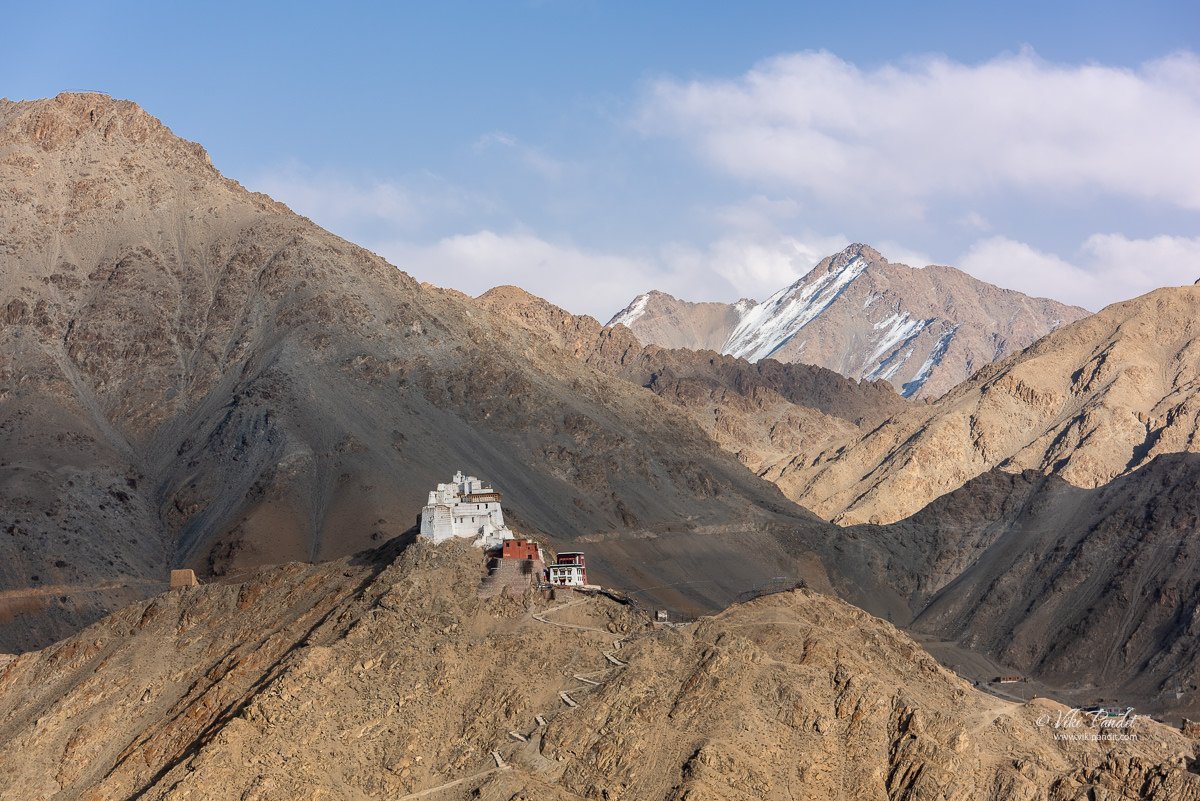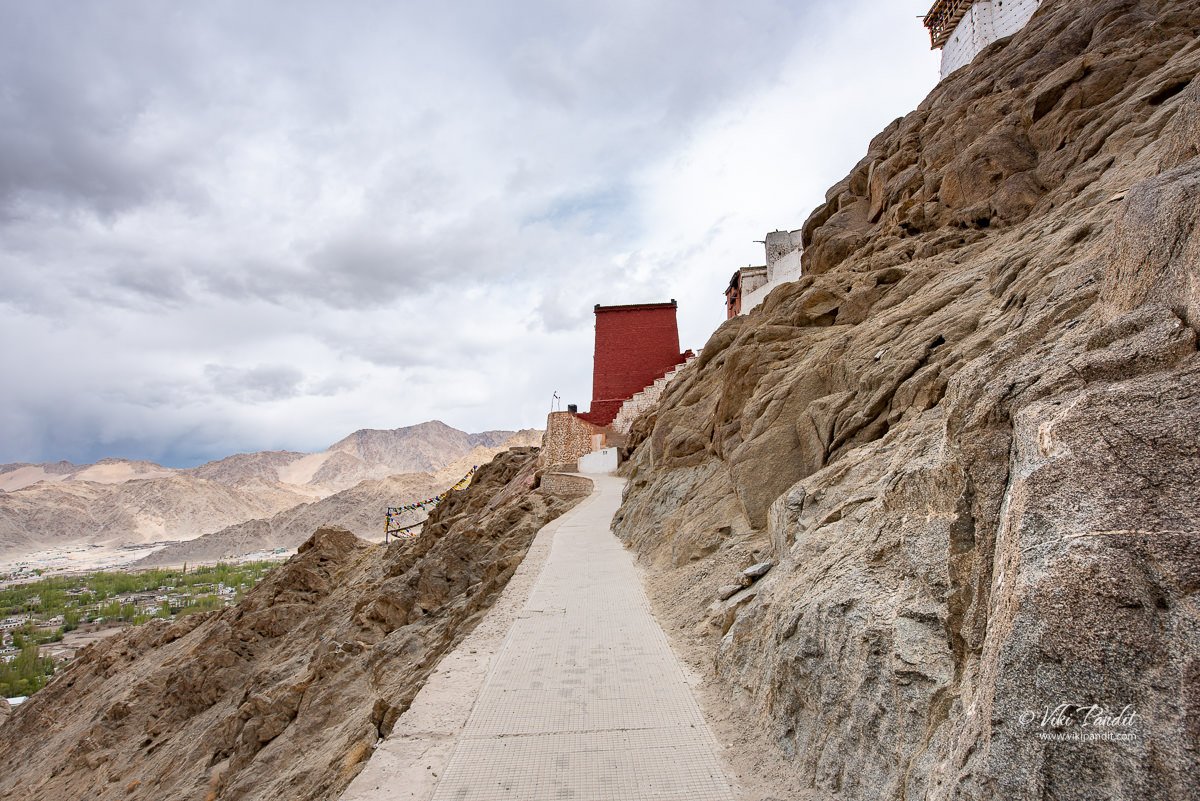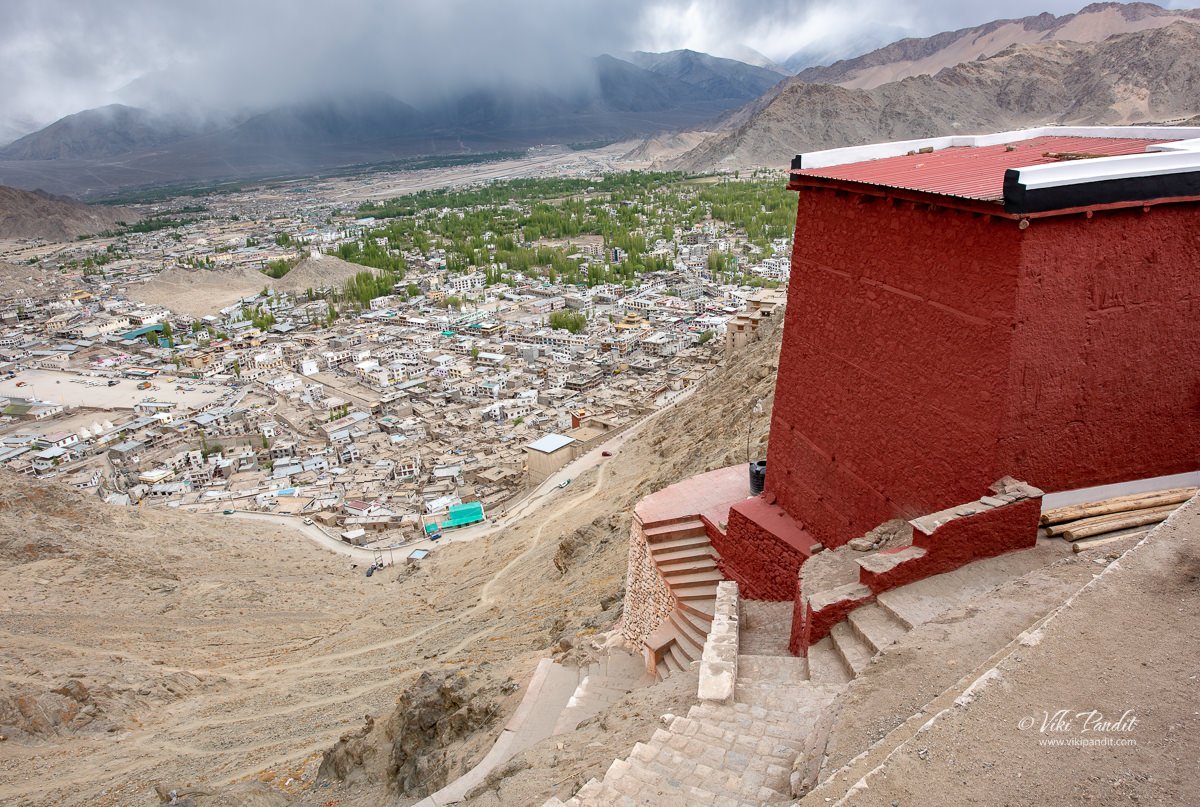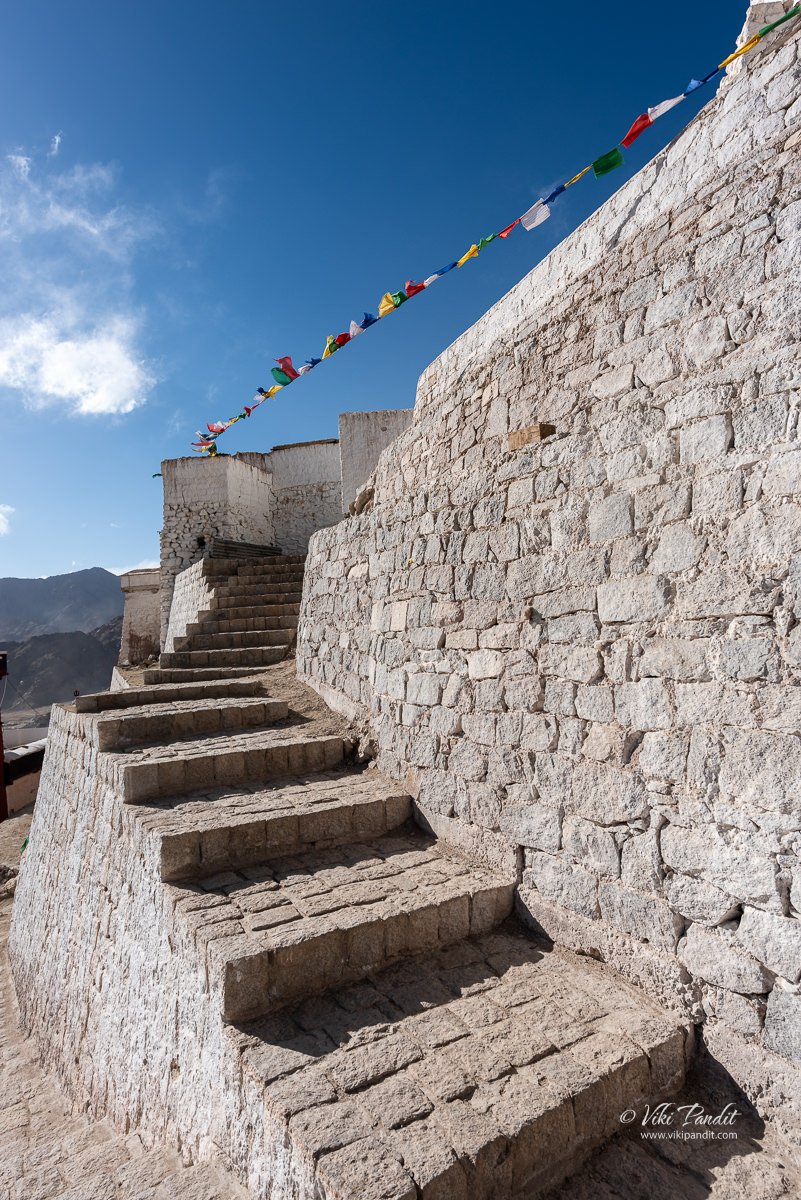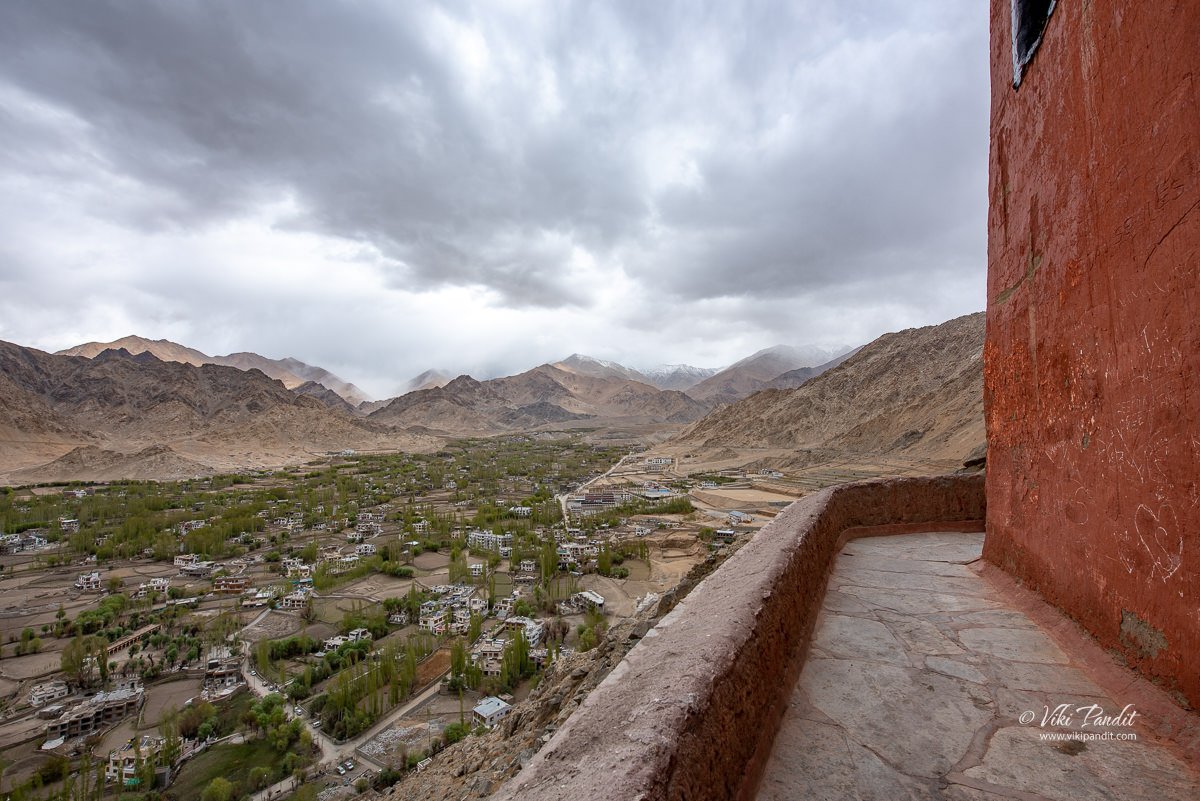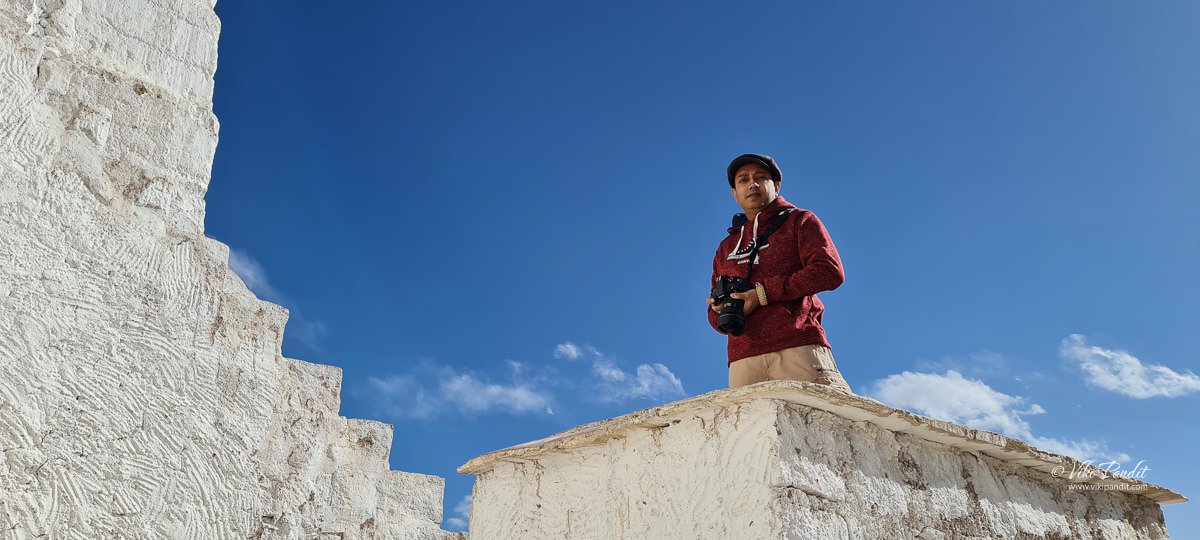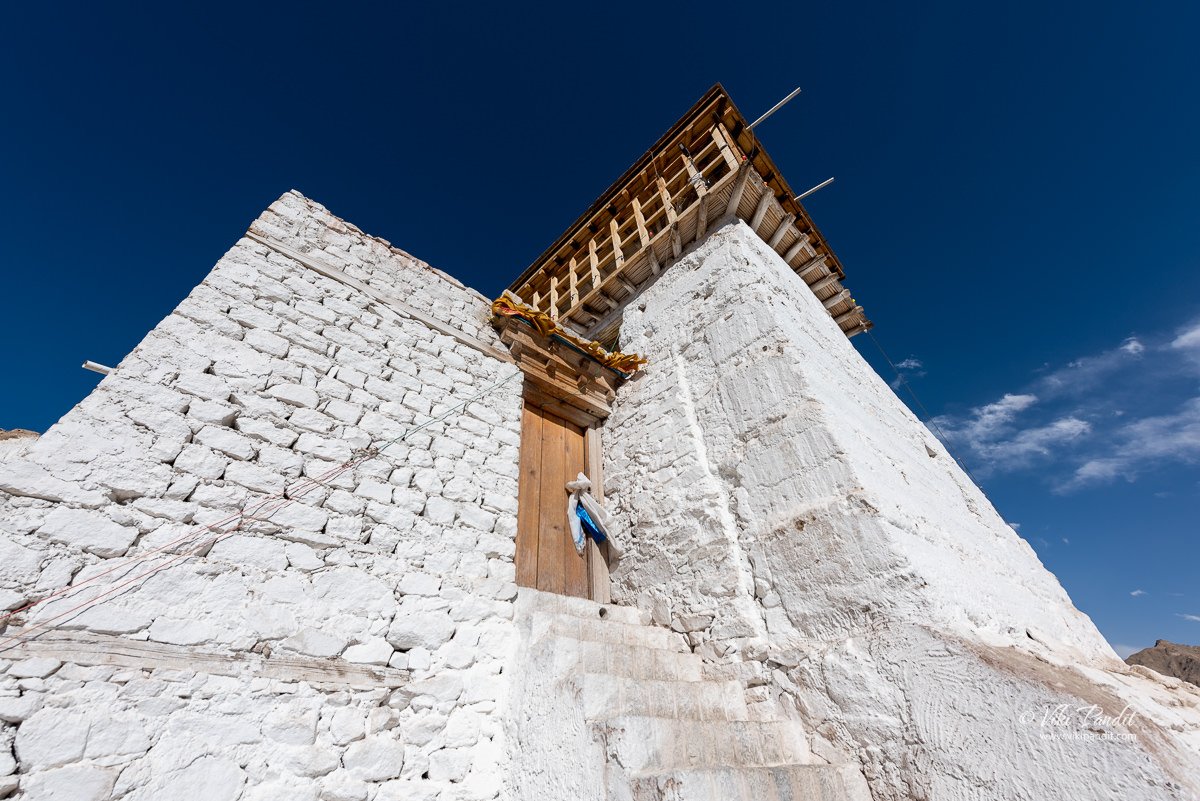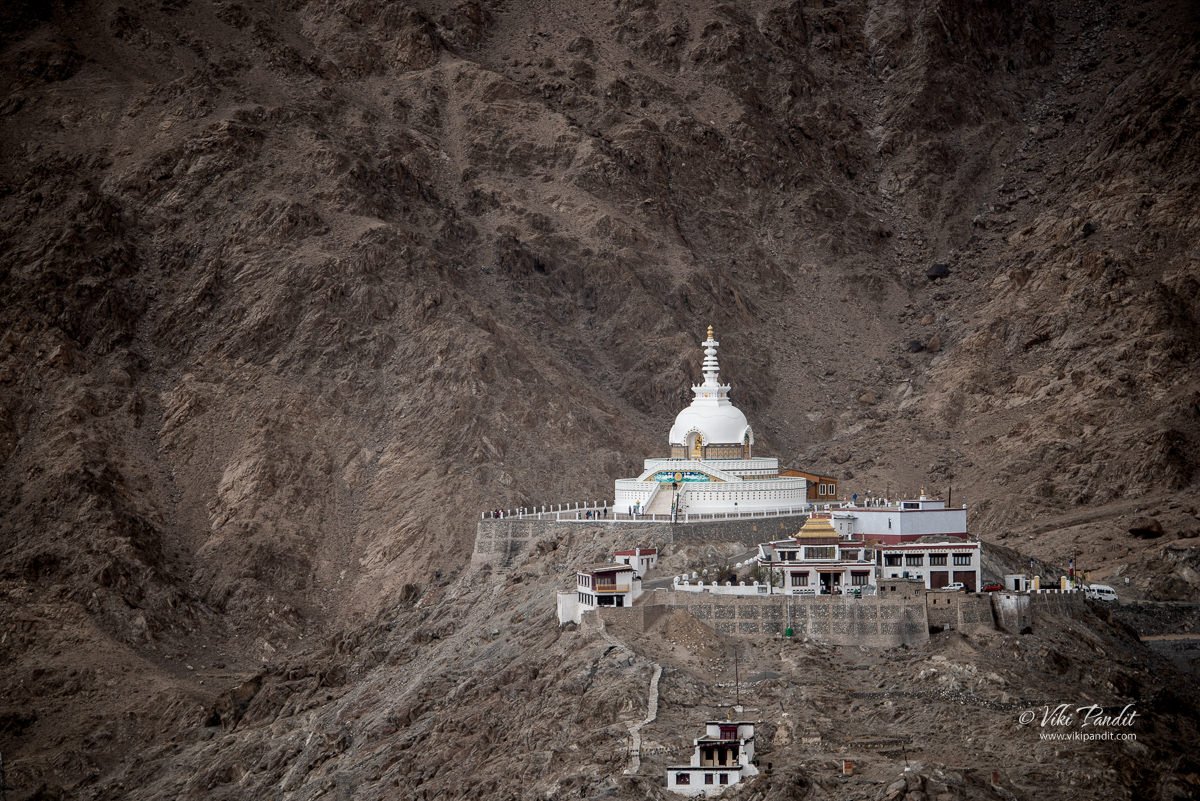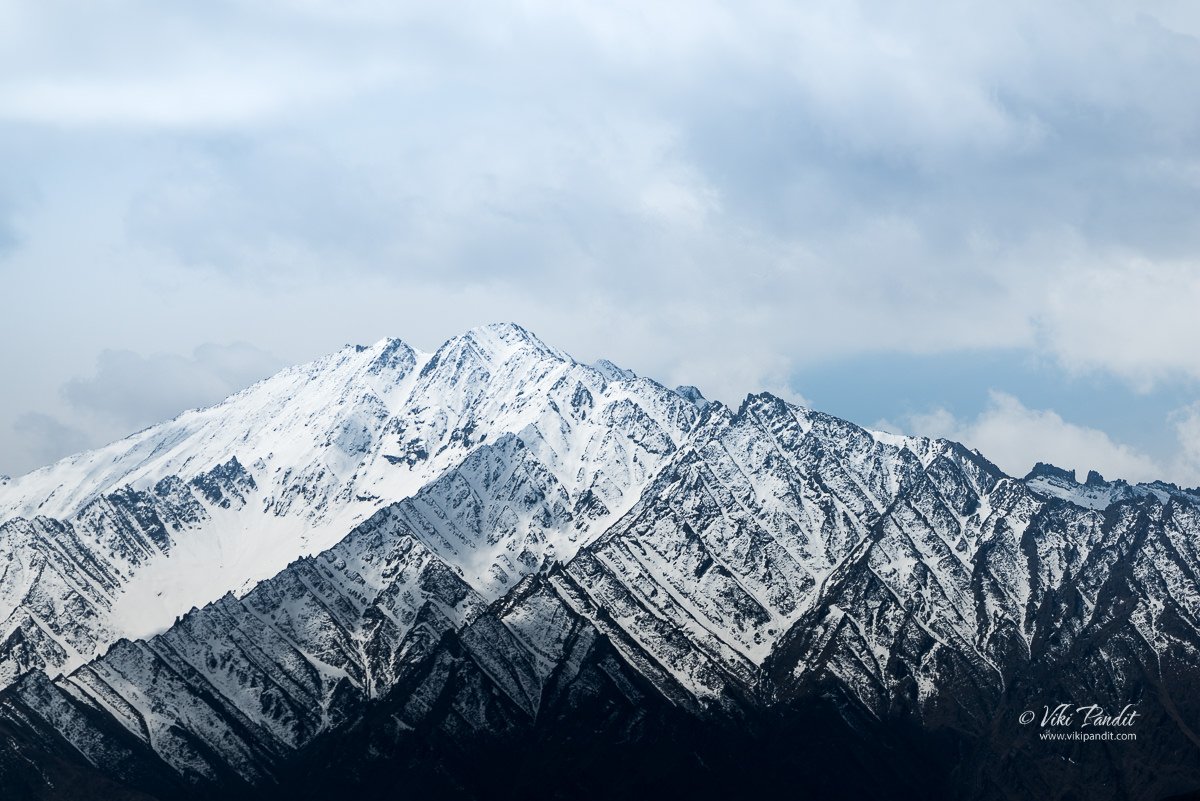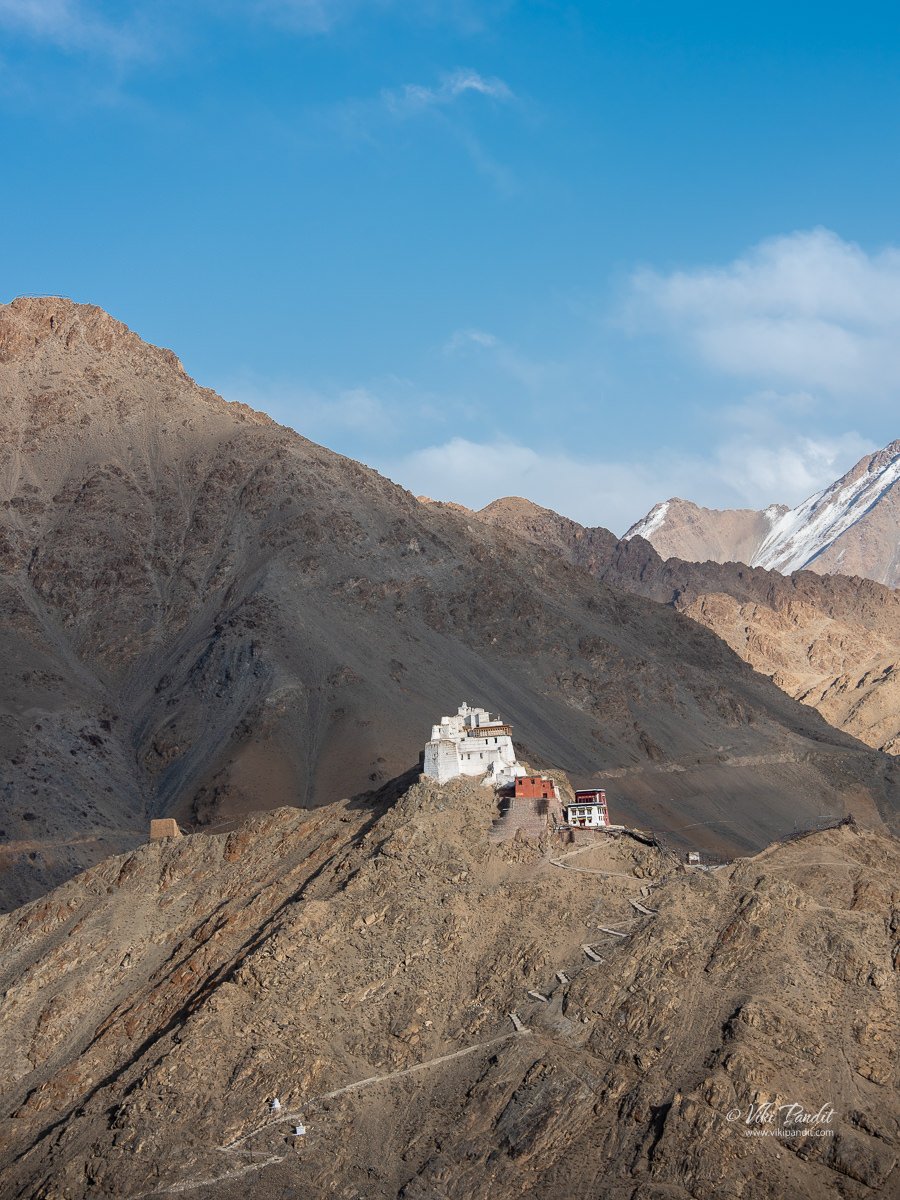Mani and I were back in Leh. After a memorable experience in 2018, we had been thinking about going back to the “land of high passes” for some time. The tourist season in Ladakh starts around early May. This time, to escape the crowds, we came a month early in April itself. As we deplaned, the air was brisker and the Sun was softer. After settling in at the Hotel Kesaar Palace, which I totally recommend, we set out to revisit the Namgyal Tsemo Gompa.
The Namgyal Tsemo Monastery, also known as Namgyal Tsemo Gompa, is perched atop a hill overlooking the charming town of Leh. “Namgyal” translates to “victorious” in Tibetan, while “Tsemo” means “red hill.” It forms a part of the Leh palace complex and is maintained by monks from the Sankar Gompa.
When you meet locals in Leh, it is rewarding to wave, smile, and say “joo-lay”
Nestled amidst the awe-inspiring landscapes of the Himalayas, Leh, the capital of Ladakh, stands as a testament to the region’s rich cultural heritage and historical significance. Among its many treasures, the Namgyal Tsemo Monastery holds a special place, offering a glimpse into the vibrant history and spiritual essence of the area.
King Tashi Namgyal
Built in 1430 CE by King Tashi Namgyal, the founder of the Namgyal dynasty, the monastery serves as a historical repository, offering a window into the past of this remote region. The Namgyal Tsemo is a testament to the flourishing cultural and artistic expressions of the time, as well as a reflection of the king’s commitment to Buddhism.
King Tashi Namgyal was a prominent historical figure in the region of Ladakh. He was the founder of the Namgyal dynasty, which ruled Ladakh for several centuries. He is credited with unifying the fragmented regions of Ladakh and establishing a stable and organized administration. His reign marked a significant period of political consolidation and cultural development. This monastery not only served as a place of worship but also as a symbol of his dynasty’s rule.
The typical ascent route to the Namgyal Tsemo Gompa is from the Leh Palace road near the entrance to the Leh Palace. However, we had booked a cab for the day and he drove us right to the top of the hill and drpped us off at the entrance of the gompa.
The skies were sunny and blue as we walked up the stairs of the gompa. Indide the monastery one can find a large collection of scriptures, murals, and artifacts that offer insights into the spiritual practices and artistic achievements of Ladakh’s people. The intricate thangkas, vibrant murals, and meticulously handwritten manuscripts speak volumes about the dedication of the artisans and the reverence for Buddhist teachings. The monastery also hosts a three-story high solid gold idol of Maitreya Buddha.
Because we were ahead of the tourist season, the halls of the monastery were closed.
Even without the ancient artifacts, you can still enjoy the amazing view. The environment around Namgyal Tsemo Gompa looks very attractive surrounded by snowcapped peaks of the Zanskar range. The city, with towering edifices of granite and gravel mountains encompassing them, look frail and inconsequential.
Beyond its artistic treasures, Namgyal Tsemo Monastery is a living testament to the resilience of Ladakh’s people. Throughout its history, the region faced numerous challenges, including political upheavals and environmental adversities. The monastery’s continued existence amidst these challenges echoes the unwavering determination of the Ladakhi people to preserve their heritage and way of life.
Namgyal Tsemo also plays a crucial role in the spiritual life of the locals. The monastery serves as a place of worship, meditation, and reflection, offering an escape from the demands of daily life. The panoramic views from the monastery’s vantage point further enhance its spiritual ambiance, providing a sense of elevation both physically and spiritually.
In recent times, with increased tourism to Ladakh, Namgyal Tsemo Monastery has gained much recognition. Visitors from around the world are drawn not only to its historical significance but also to the ethereal beauty of its surroundings.
Views from the summit are spectacular – the town of Leh and the Indus Valley lies to the north and west at the foot of the hill. The smaller hill of the Shanti Stupa lies across town to the north. Leh rests in the “Trans-Himalayan” region of India — dividing the India Great Himalayan Range in the west from the Tibetan plateau to the east. Two smaller ranges surround the valley and are visible as distant snow-covered giants — the Ladakh Range to the east and the Zanskar range to the west.
We sat there for some time in silence watching the snowfall slowly engulf the far away mountains. It is exciting that such exquisite beauty can emerge from such simplicity. Even though the gomoa is ond if the mist important landmarks of the city of Leh, very few tourists visit the heritage site on a regular day. As we lay there, a breathtaking spectacle unfolded over the majestic Himalayas.
Leh is surrounded by some of the world’s most spectacular landscapes. The town is nestled amidst the mighty Himalayas and the Karakoram Range, offering awe-inspiring views of snow-capped peaks, deep valleys, and serene lakes. The faraway mountains are generally veiled in thick snow. The town’s high altitude lends a rarefied quality to the air and offers panoramic views that are unlike those found in most other places. The clear skies and vibrant colors of the landscape add to the allure. It offers photographers a treasure trove of subjects, from stunning landscapes to intricate architecture and vibrant cultural celebrations.
Thanks for reading! Please leave your comments if you enjoyed my story or follow me on my journey as I visit the Stok Monastery on the outskirts of Leh.
